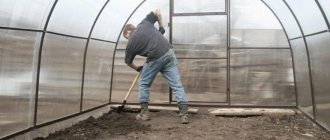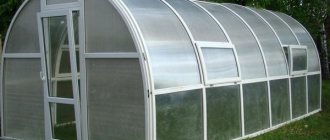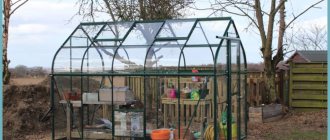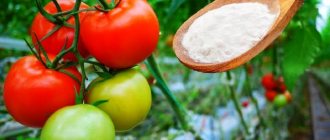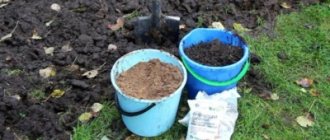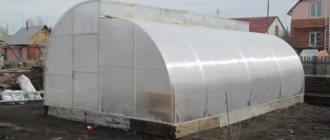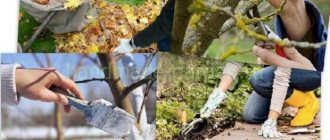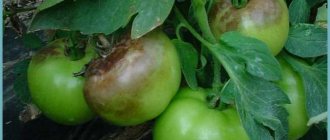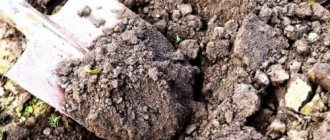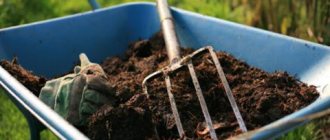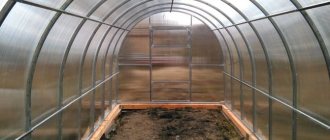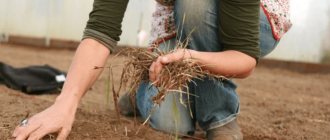Soil is the most important part of any garden. To grow a large harvest, you need to regularly take care of the condition of the soil on your plot of land. A very important period for such activities is autumn. After harvesting, you need to prepare the soil for cold weather and prevent infection with various diseases and pests.
How to treat the soil in the spring, what products to use, how to properly treat the soil? These questions interest all gardeners and gardeners. It is important to choose the right period of time and use the right means. By following special rules, your harvest will be the envy of all your neighbors.
Possible soil problems in autumn
It is necessary to cultivate the soil in the fall every year, but in certain circumstances it is simply necessary. Sometimes in a certain area the yield drops sharply, which indicates various soil problems:
- pest infestation. They can be small (aphids, mites) and quite large (moles, slugs, mole crickets, shrews and others). Many of them overwinter well (they lay eggs, which they bury deep underground, wake up in the spring, and begin to destroy the crop). Young plants in the spring are most susceptible to attack by parasites and pests;
- infection by bacteria and fungi. After harvesting, spores of pathogenic microorganisms remain in the soil. Some may die from the cold, but most, having successfully wintered, will begin to destroy the future harvest. The main sign of infection is the appearance of black and white spots on the leaves of plants;
- exhaustion. As the same plant grows on one piece of land, the soil releases useful substances and minerals. The land is depleted and loses its fertility. This situation is characterized by causeless death of plants and a small harvest;
- presence of weeds. There are weeds in any garden bed, but in large quantities these plants interfere with the normal growth and development of a full-fledged crop.
Regular soil care, especially in the autumn, will help overcome these problems.
Look at the review of the most effective remedies for cockroaches in the apartment, and also find out the rules for their use.
What causes bedbugs to appear in an apartment and how to get rid of blood-sucking parasites? Read the answer on this page.
The best herbicides for the garden
To treat beds with tomatoes, peas and potato plots, a preparation such as “Agritox” is very often used. This herbicide has a detrimental effect on weeds such as grass, nettle, shepherd's purse, cornflower, dandelion, wild radish, arrowhead, etc.
Cucumbers and other cucurbits can be sprayed with Halosulfuron or Bensulide. Linuron is perfect for carrots. Herbicide "Lazurit" is used for all types of vegetable crops.
Preparing for autumn processing
Preparatory work is very important for the soil; if you omit this important part of soil care, further actions will lose their effectiveness. It is better to start autumn tillage during harvest or immediately after. Do not delay manipulations for long; in a short period of time, various pathogenic microorganisms and parasites can settle in organic residues, infecting the entire soil. This state of events is facilitated by fog and rain.
Preparation for tillage consists of several points:
- against uninvited large guests (rats, hares, mice), hill up bushes and wrap tree posts;
- Burn all garden waste and fallen leaves;
- trim dried branches, “top” shoots;
- whiten the trunks;
- It is recommended to lay out simple traps for rodents;
- Treat trees and shrubs with special chemicals against diseases and pests. This way you can reap a rich and high-quality harvest in the future.
Before spraying trees and shrubs, find out the specific causative agent of the disease or parasite. Improper treatment of plants and soil with various insecticides can ruin the garden and make the soil unsuitable for sowing for several years.
Loosening the top layer of soil
Carry out the manipulations after harvesting, removing organic residues from the land, loosen the beds by four centimeters. With these actions you will remove the soil crust. Carry out activities before the onset of the first cold weather. Loosening the soil promotes the growth of weeds; they will grow in the fall; after digging, the weed seedlings will die, thereby reducing the time for weeding next spring.
Digging the soil
Before starting manipulations, make sure that your soil is heavy clay; there is no need to dig up sandy crumbly soil. Such manipulations have a positive effect on clay soil: voids are formed in it, which fill the air. Lack of oxygen negatively affects the future harvest.
Autumn digging of the soil helps to destroy pests and parasites. Manipulations destroy the passages of parasites, clearing the passage for cold air, which negatively affects the pupae of pests. Digging also protects the soil from weeds and promotes the penetration of various fertilizers into the deep layers of the soil. Without performing such manipulations before cultivating the land, the beneficial substances will be poorly absorbed.
Note! Carry out digging before the start of the rainy season (before the beginning of October). If the soil is wet by more than 10 cm, it is no longer recommended to cultivate it. The recommended digging depth is 15 centimeters.
Digging
After describing pests and diseases, we will provide information about the most effective ways to prepare land for wintering. The simplest and cheapest way is to dig it up or plow it. Moreover, sandy soils are not so sensitive to this event. They are already water and breathable. Loams are in dire need of digging.
The deformation of the soil compacted over the summer causes inconvenience to the hiding larvae, and they leave the dug up area, and most simply die when the soil layer is loosened, especially if it is plowed by a plow. By digging up the ground, you destroy mouse and mole holes, which also entails their escape from the site. And some of the animals that did not have time to hide from the plow, just as in the case of caterpillars, remain in the cold autumn soil forever.
When digging, you should be careful not to damage the roots located at the very surface of the soil, especially for fruit and berry bushes. In young trees, the roots are located quite deep, but in raspberries, gooseberries, currants, blackberries, honeysuckle, etc., the top layer of soil, at the base of the bush, is filled with lateral roots. Therefore, within a radius of 30 cm, it is better to treat the soil around the bush with a garden rake and mulch it.
As the trees grow, if the tree trunk circles of fruit trees are constantly treated, the roots do not rise to the surface, but remain at a depth of 20 to 60 cm. Otherwise (the earth around the tree has not been dug up for 2-3 years), the roots rise into the upper layers of the soil, and can then be easily damaged by a shovel.
Fertilizers and pest control products
Having carefully prepared the soil for autumn treatment, you can begin to select the right product. What fertilizers are recommended to be applied to the soil in the fall? Let's figure it out.
Manure
Many gardeners know this remedy and often use it in the autumn. If there is no place to compost and then store the substance, it is recommended to purchase it in the fall and then immediately apply it to the soil. It is recommended to lay the remaining part for maturation. It is allowed to apply fresh manure in the autumn for planting cucumbers, celery, late cabbage, and pumpkin crops. If the manure includes sawdust and other organic compounds, then you will get an excellent result only after a year, so add nitrogen fertilizers for the desired effect.
Why should manure be applied in the fall? The substance is saturated with weeds, they will sprout before the main planting, you can easily remove them while loosening the soil. In autumn, the manure is saturated with moisture and mixes well with the soil.
Manure is applied while loosening the soil for perennial fruit crops, raspberries, strawberries, and all varieties of apples. Carry out manipulations immediately after harvesting.
Peat
The substance contains a lot of nutrients that increase the soil's resistance to various pests and parasites. Peat loosens the soil; the substance must be distributed evenly throughout the soil. Start adding peat in the fall (use 4–5 liters of the substance per square meter of soil), repeat the manipulations in the spring, add humus, dig. Such manipulations will help to perfectly fertilize the soil and destroy many pests and parasites.
Ash
It is an organic fertilizer that is rich in potassium. It is allowed to be applied only to heavy clay soil. For other soils, the use of ash is unprofitable, since all useful substances are washed out of them by melt water. Ash copes well with various pests and parasites; for each type you need to prepare a unique solution:
- against melon aphids. Pour 300 grams of ash with a liter of boiling water, boil for twenty minutes. Let the product settle, add 10 liters of water, treat the soil;
- destruction of Colorado potato beetle larvae. After digging up the soil, many parasite larvae will appear on the surface; sprinkle the soil generously with ash. The larvae will die within two days.
Urea
It is a nitrogen fertilizer, the second name is urea. The substance releases nitrogen, binds what is already in the soil, and stores it until spring. You can get the desired result only by covering the ground, otherwise the urea will have time to evaporate. In autumn, it is advisable to fertilize the soil with urea in parallel with phosphorus. For such purposes, a special mixture is used: combine one hundred grams of chalk with a kilogram of superphosphate, add three parts of urea to one part of this product. Mix the mineral fertilizer thoroughly, apply at the rate of 150 grams of the finished mixture per square meter of soil.
Mulching
Simply put, such manipulations mean saturating the soil with organic matter. Gardeners use the following as mulch:
- organic compounds: pine needles, sawdust, hay, bark, even shredded waste paper (cardboard, paper);
- inorganic substances: polypropylene fibers, expanded clay, zeolite.
It is recommended to cover the beds that are free and those occupied by perennial plants with a thin layer of mulch. Sometimes organic and inorganic compounds are used simultaneously; the recommended mulch thickness is up to seven centimeters. Such manipulations protect the soil from certain pests, for example, nematodes, flies, and various diseases.
Important! Please note that when using tops, there should be no seeds. It is also not recommended to be overzealous with pine needles; this can lead to an increase in soil acidity. Everything should be in moderation.
Green manure plants
Popularly called green fertilizers. They are designed to perform several important functions:
- enrich the soil, saturate it with nitrogen;
- loosen the soil, saturate it with the required amount of oxygen;
- disinfect (destroy pathogenic bacteria, fungi, parasite larvae, adult pests);
- inhibit the maturation of weeds.
What and how to remove midges from the kitchen and prevent the proliferation of annoying insects? We have the answer!
How to permanently get rid of mice in the house? Effective control methods are described on this page.
Go to the address and learn how to get little red ants out of your apartment.
Green manure plants include:
- legumes,
- clover,
- mustard,
- oats,
- rye,
- sunflower,
- buckwheat
It is recommended to plant them in the autumn so that the green mass has time to form before frost, but they will continue to grow for several more weeks in the spring. If the weather is warm in the fall, then these plants can grow a lot and put out buds. Before they form, trim the ovaries, preventing the presence of buds.
How to cultivate land (soil) for the winter
Acidic soils - liming
Different soil types require different treatments in the fall. Acidic soils are no exception. High acidity of the soil will prevent you from getting a good harvest, since garden crops grow well only on neutral and slightly acidic soils. For this reason, it is necessary to persistently reduce its acidity on your own.
Liming will help with this. This method, in addition to its main mission, will help improve breathability and increase fertility.
For liming the following can be used:
- cement dust,
- wood ash,
- slaked lime,
- dolomite flour,
- peat ash.
It is impossible to name a specific application dose, since the composition, acidity of the soil and the amount of calcium contained in the liming agent are important.
Thanks to this procedure, clayey areas become much looser, while sandy areas begin to retain moisture better and become more viscous. In addition, liming leads to the fact that beneficial microorganisms begin to develop in the soil, which improve its fertile functions.
Making the right beds
Warm beds
In the fall, you need to prepare the beds for future plantings. After the snow melts, all that remains is to loosen the soil and begin planting. Traditional garden beds are usually raised slightly above ground level by turning up the soil.
Recently, many gardeners have begun to build special embankments or trenches for planting. These high beds are also called warm beds, because they are based on a kind of layered “pie” of various organic matter, which serves as both food and a source of heat for plants.
Such beds are made by constructing a high frame on the ground or digging a trench. Which option to choose depends on the site. If groundwater flows close to the surface of the earth, then a sunken bed is clearly not suitable. After completing the frame, a mesh with small cells is laid on the bottom. It will protect the plants from rodents, but will allow earthworms to pass through.
Layers can be laid in this order:
- Coarse and large waste: stems of tall plants, branches, wood trimmings. They will become a kind of drainage and provide air access to the roots.
- Rotted manure or bird droppings with straw. This layer will not only serve to nourish the plants, but will also provide heating for the beds.
- Compost.
- Earth, top fertile layer. There should be another 10–15 cm from it to the edge of the frame. This will be convenient both for plants and for covering the bed with a film like a greenhouse in case of frost.
Before laying the next layer, the previous one is thoroughly watered. The warm bed is also made in the form of a hill, which increases the usable area for planting. For the winter, warm beds are covered with mulch. Such a structure will last 5–6 years, then you need to prepare the bed again in the fall using the same layered principle.
To prevent a high bed, which in its essence resembles a compost heap, from becoming reminiscent of a garbage pit, you need to keep the raw materials moist and ensure good air exchange.
How to dig up beds in the fall
Digging beds in autumn
To dig or not to dig? Every autumn, gardeners are faced with an almost Shakespearean question, and everyone solves it in their own way. Proponents of organic farming consider such actions undesirable, even harmful to the soil. In their opinion, this creates excellent conditions for the death of microorganisms and for the favorable growth of weeds.
But most still dig their garden the old fashioned way. In the spring, it remains to loosen the soil and begin planting. They start digging in mid-autumn, when the weather is still warm and weeds overrun the empty beds with impunity. Leaving them like this means that in the spring we will end up with an overgrown garden, and it will be much more difficult to get rid of unnecessary herbs.
Digging up the ground in the fall for planting also provides the following advantages:
- we get loose and soft soil;
- in spring the earth warms up faster and ripens for planting;
- in cold weather, harmful insects and pathogenic bacteria die faster;
- Snow is better retained on such land;
- fertilizers are added along with digging;
- the soil is well saturated with moisture and saturated with air.
They dig up the soil in two ways: dumpless and dump. In the first case, having removed the earthen lump with a shovel, they leave it there, do not turn it over or break it. It is believed that earth microflora will be better preserved this way. The moldboard method, which is more often used in the autumn, consists of turning over and breaking up lumps of soil. At the same time, fertilizers are added inside. The dug up soil will freeze better, and along with this, insect pests will die.
So, we dig up the soil along with the applied fertilizer to a depth of 15–20 cm, breaking up the clods. You can also use a rake to level the beds.
You should not dig up in the fall areas with a slope and flooded in the spring, as well as those that are susceptible to erosion.
Biogard - new on the market
The new generation bioherbicide “Biogard” was created to combat more than 400 varieties of wild grasses. At the same time, the drug has a beneficial effect on fruit and vegetable crops, thanks to its universal formula. "Biogard" is available in the form of a small bottle of serum.
Application:
- Dilute 25 ml of whey with 3 liters of water;
- the finished liquid is enough to spray 12 m2 of land.
Pros:
- inexpensive;
- long shelf life;
- increases the immunity of cultural plantings;
- safe for animals, insects and humans.
Minuses:
- No.
Cost: 147 rubles per 100 ml.
2 mechanical ways to remove weeds on the site
Mechanical methods will help get rid of weeds, including hand weeding, using a hoe, chopper, cultivator and digging. To clear the soil of annoying vegetation, it is better to combine all methods. Tools will help simplify the weeding procedure.
Hand cultivator Tornado
The Tornado manual cultivator is effective and easy to use.
Its teeth are located in such a way that using the new product does not require special physical strength. It is worth lightly pressing on the cutting and turning the device to pull out the lump of earth along with the weeds. Many reviews rated the new product positively. Saves time and effort in the garden.
To dig or not to dig
Adherents of organic farming insist that there is no need to dig beds in the fall. They scatter humus over the surface and cover it with spunbond. We believe that autumn digging is necessary - it improves the structure of the soil and allows you to fight harmful insects.
When digging in the fall, you can use one of two methods:
- Dump. The lump of earth is turned over so that the top layer is at the bottom. With this approach, the pest larvae that have hidden for the winter end up on the surface and die.
- Dumpless. The clod of earth is not turned over. Beneficial microflora is preserved in full.
Regardless of the digging method, the clods of earth do not break up in the fall. This way the water gets deep into the bed, in winter it will freeze there and destroy the clay lumps, as a result the soil structure will improve and the moisture will last for a long time.
It is undesirable to prepare the bed completely in the fall, with leveling and other attributes - over the winter the soil will sag, holes will form, and you will have to do this work again in the spring.
